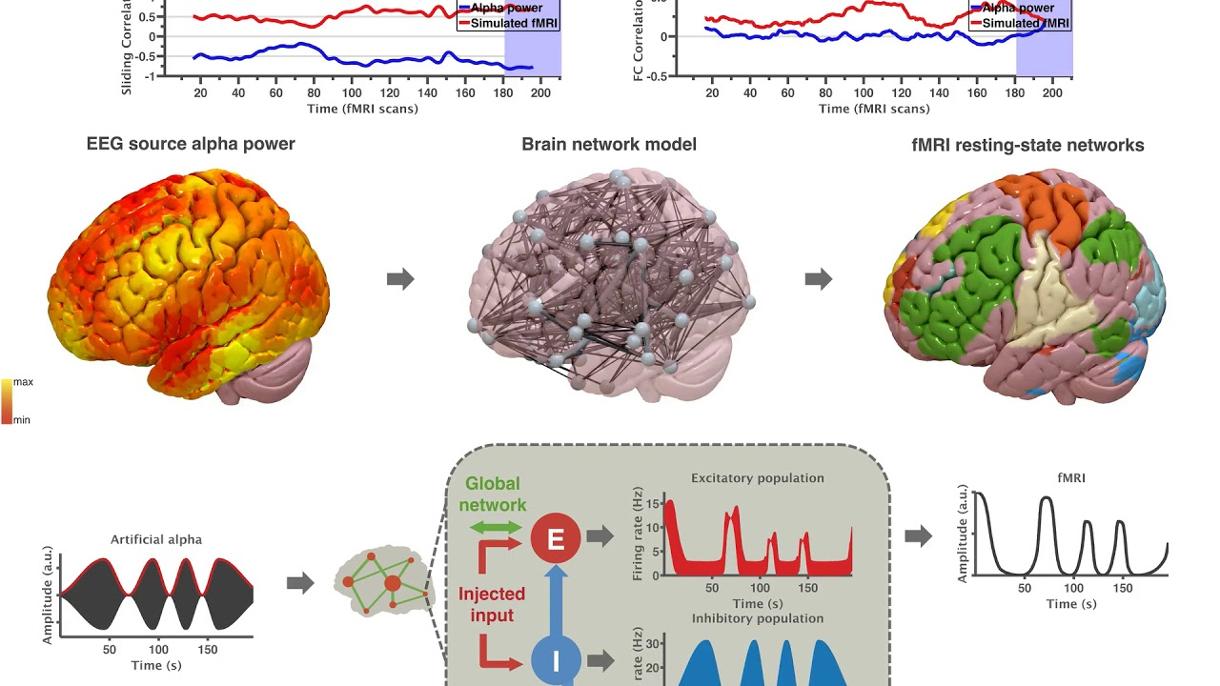Related publication
Inferring multi-scale neural mechanisms with brain network modelling, published in eLife, January 2018, by Michael Schirner, Anthony Randal McIntosh, Viktor Jirsa, Gustavo Deco, Petra Ritter
doi: 10.7554/eLife.28927
Abstract
The neurophysiological processes underlying non-invasive brain activity measurements are incompletely understood. Here, we developed a connectome-based brain network model that integrates individual structural and functional data with neural population dynamics to support multi-scale neurophysiological inference.
Simulated populations were linked by structural connectivity and, as a novelty, driven by electroencephalography (EEG) source activity. Simulations not only predicted subjects' individual resting-state functional magnetic resonance imaging (fMRI) time series and spatial network topologies over 20 minutes of activity, but more importantly, they also revealed precise neurophysiological mechanisms that underlie and link six empirical observations from different scales and modalities:
- (1) resting-state fMRI oscillations,
- (2) functional connectivity networks,
- (3) excitation-inhibition balance,
- (4, 5) inverse relationships between α-rhythms, spike-firing and fMRI on short and long time scales,
- and (6) fMRI power-law scaling.
These findings underscore the potential of this new modelling framework for general inference and integration of neurophysiological knowledge to complement empirical studies.
